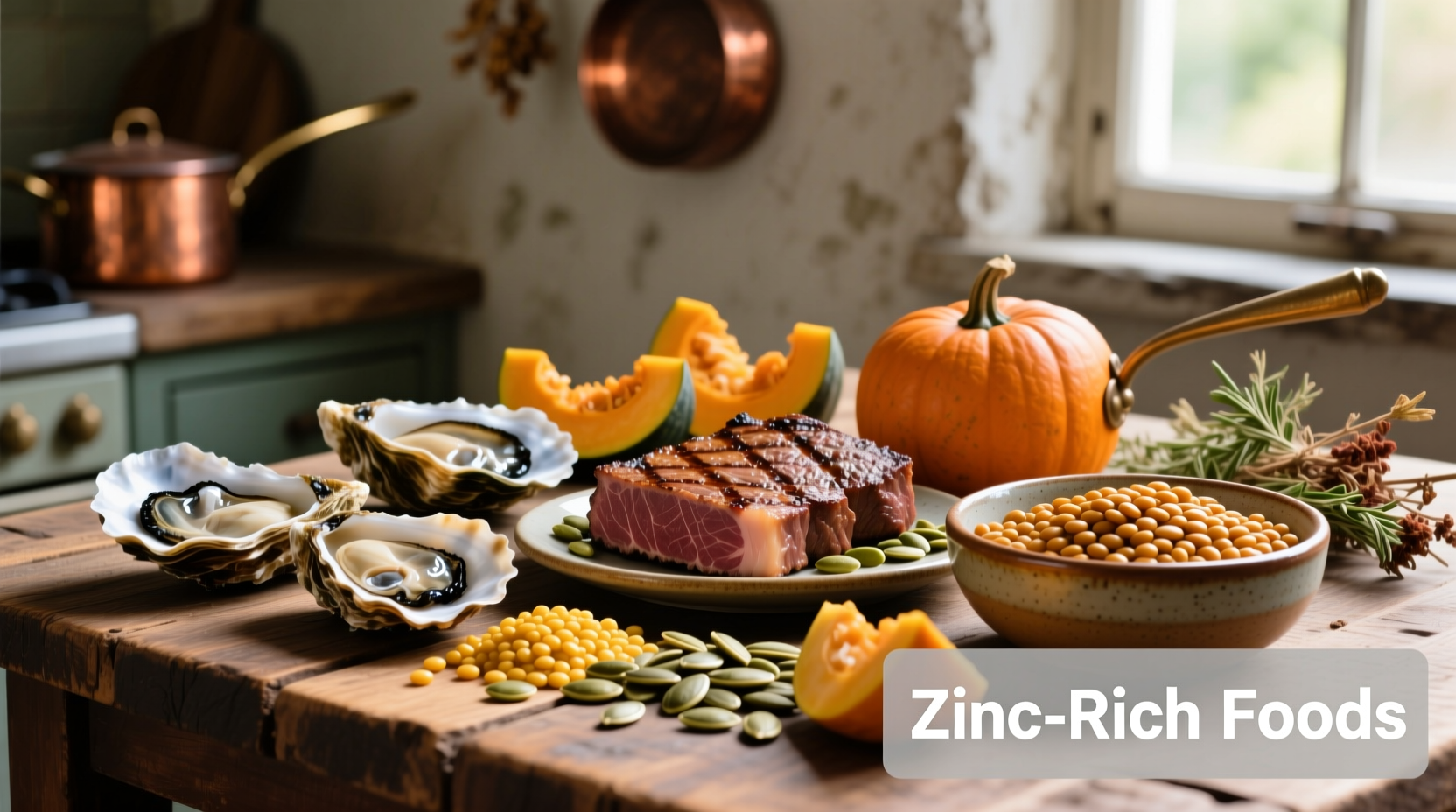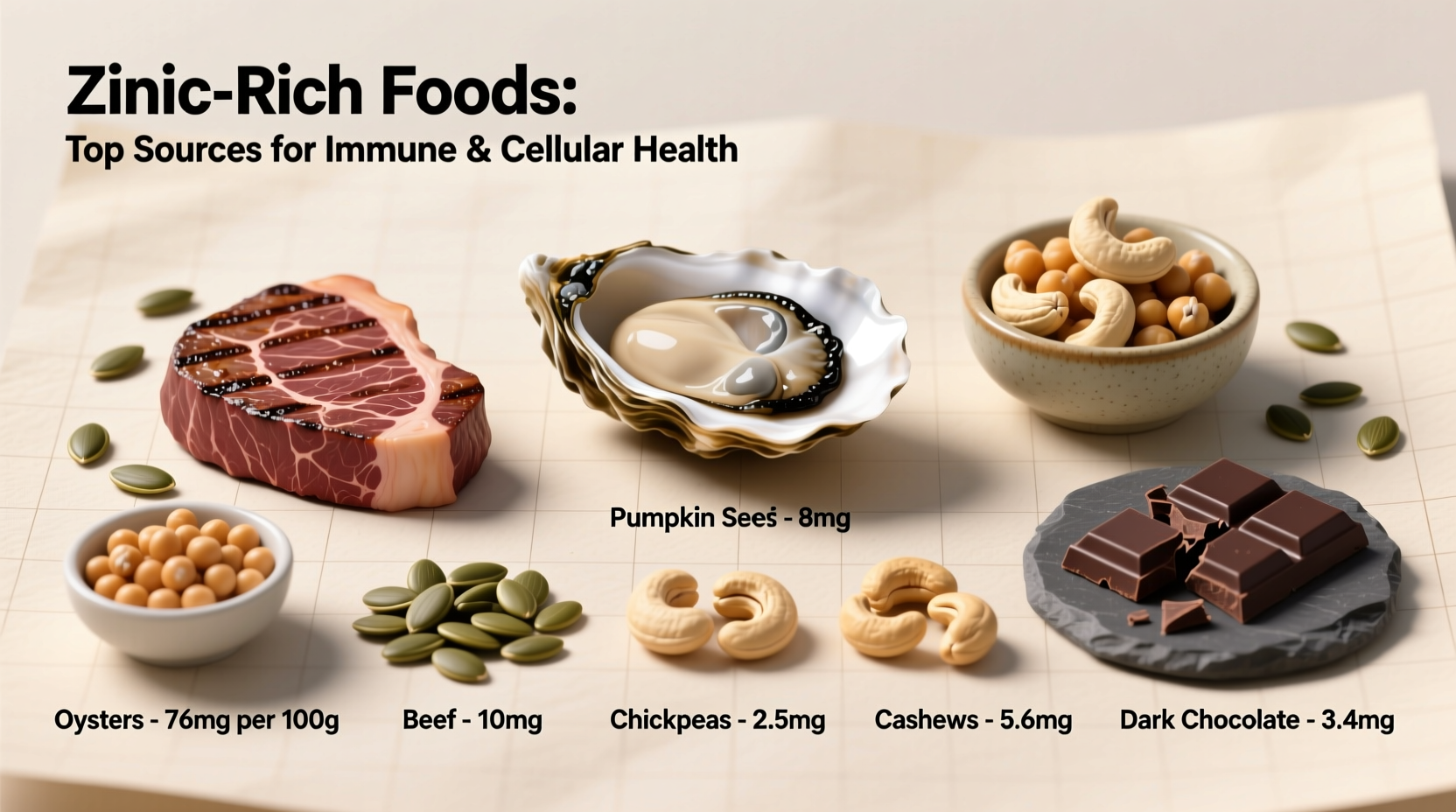Discover the most effective ways to meet your daily zinc requirements through food. Whether you're looking to boost your immune system, address potential deficiency symptoms, or simply maintain optimal health, understanding which foods deliver this crucial mineral can transform your nutritional strategy.
Why Zinc Matters More Than You Think
Zinc plays a critical role in over 300 enzymatic reactions in your body. This trace mineral supports immune function, wound healing, DNA synthesis, and proper growth during pregnancy, infancy, and childhood. Recent research from the National Institutes of Health shows that even mild zinc deficiency can impair immune response, making you more susceptible to infections.
Unlike some nutrients, your body doesn't store zinc efficiently, which means regular dietary intake is essential. The recommended daily allowance (RDA) varies by age and gender:
| Group | Daily Zinc Requirement | Increased Need Considerations |
|---|---|---|
| Adult men | 11 mg | +20% for intense physical activity |
| Adult women | 8 mg | +3 mg during pregnancy, +4 mg while breastfeeding |
| Vegetarians/Vegans | N/A | May need 50% more due to lower bioavailability |
| Older adults | Same as adults | Higher risk of deficiency due to reduced absorption |
Top Food Sources of Zinc: What Actually Works
Not all zinc sources are created equal. Bioavailability—the amount your body can actually absorb—varies dramatically between food types. Animal proteins provide zinc in a form your body absorbs more efficiently (15-40% absorption), while plant sources typically offer 5-10% absorption due to phytates that bind zinc.
Animal-Based Zinc Powerhouses
Oysters reign supreme as the zinc champion, delivering a staggering 74 mg per 3-ounce serving—more than 670% of your daily needs. But you don't need to eat oysters daily to meet requirements. These animal sources provide excellent bioavailable zinc:
- Beef chuck roast (3 oz): 7 mg (64% DV) - Also rich in iron and B12
- Alaskan king crab (3 oz): 6.5 mg (59% DV) - Contains selenium for thyroid support
- Pork tenderloin (3 oz): 2.4 mg (22% DV) - Lean protein option
- Chicken dark meat (3 oz): 2.4 mg (22% DV) - More zinc than white meat
- Fortified breakfast cereals (1 serving): Varies (check labels) - Often provide 25-50% DV
Plant-Based Zinc Sources: Maximizing Absorption
For vegetarians and vegans, getting enough zinc requires strategic planning. While plant sources contain zinc, their bioavailability is lower. The American Journal of Clinical Nutrition recommends these techniques to boost absorption:
- Soaking and sprouting legumes and grains reduces phytate content
- Leavening bread with yeast breaks down phytates
- Consuming with organic acids like lemon juice or vinegar enhances absorption
Top plant-based options include:
- Pumpkin seeds (1 oz): 2.2 mg (20% DV) - Also rich in magnesium
- Lentils (½ cup cooked): 1.3 mg (12% DV) - Pair with vitamin C-rich foods
- Chickpeas (½ cup cooked): 1.3 mg (12% DV) - Soak before cooking
- Quinoa (1 cup cooked): 1.8 mg (16% DV) - Complete protein source
- Mushrooms (shiitake) (½ cup cooked): 0.9 mg (8% DV) - Contains immune-boosting compounds

Real-World Zinc Strategies: What Nutrition Science Reveals
Recent dietary pattern analysis from the US Food and Drug Administration shows that combining zinc sources strategically throughout the day improves overall absorption. For example, adding pumpkin seeds to a spinach salad (which contains iron) creates a nutrient synergy that benefits both minerals.
Consider these practical applications:
- Breakfast boost: Choose fortified cereal with berries (vitamin C enhances zinc absorption)
- Lunch strategy: Add chickpeas to salads with lemon-tahini dressing
- Dinner approach: Pair grass-fed beef with roasted broccoli (sulforaphane in broccoli supports zinc utilization)
- Snack smart: Combine pumpkin seeds with citrus fruits for better absorption
When Food Isn't Enough: Recognizing Zinc Deficiency
Zinc deficiency often flies under the radar, with symptoms that mimic other conditions. The World Health Organization identifies these common signs:
- Slow wound healing
- Frequent colds and infections
- Loss of appetite
- Hair loss
- Impaired sense of taste and smell
Certain populations face higher risk:
- Vegetarians and vegans (due to lower bioavailability of plant zinc)
- Older adults (reduced absorption efficiency)
- People with gastrointestinal disorders (Crohn's, ulcerative colitis)
- Pregnant and lactating women (increased requirements)
If you suspect deficiency, consult a healthcare provider before supplementing. Excessive zinc intake (over 40 mg daily for adults) can cause copper deficiency and other health issues.
Putting It All Together: Your Zinc Action Plan
Building a zinc-rich diet doesn't require drastic changes. Start with these evidence-based steps:
- Assess your current intake: Track your diet for 3 days using a nutrition app
- Identify gaps: Compare against recommended daily amounts
- Make strategic swaps: Replace one snack with pumpkin seeds or add lentils to soups
- Optimize absorption: Pair plant zinc sources with vitamin C-rich foods
- Monitor changes: Note improvements in immune function and energy levels
Remember that balance matters more than perfection. Consistently incorporating a variety of zinc-rich foods creates a nutritional foundation that supports your overall health far beyond just meeting zinc requirements.











 浙公网安备
33010002000092号
浙公网安备
33010002000092号 浙B2-20120091-4
浙B2-20120091-4